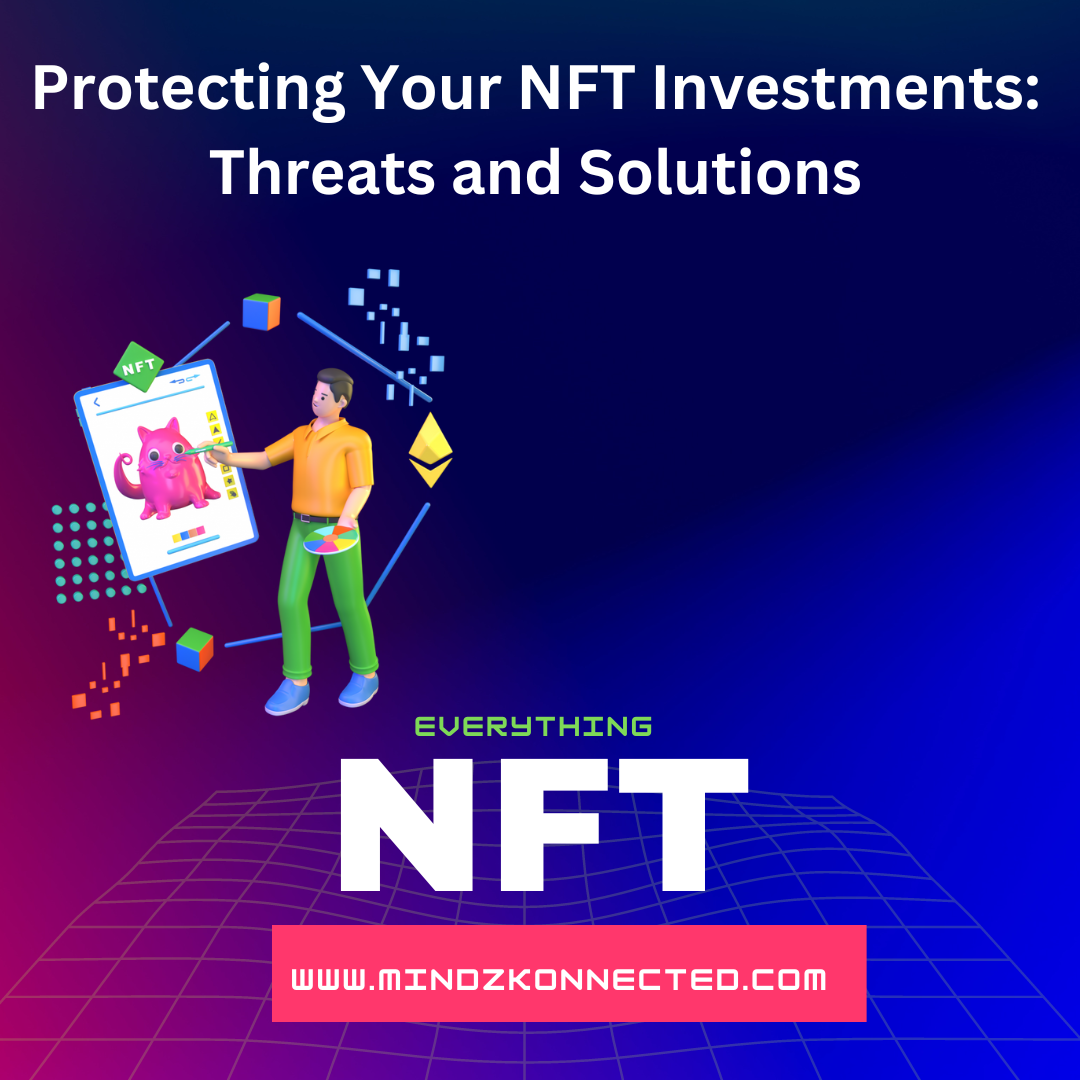
Non-fungible tokens (NFTs) have seen an exponential increase in demand lately, prompting many people to invest in this lucrative technology. Market experts predict that the NFT market will be worth around $20 billion by 2028, and grow at a CAGR of 24%. The NFT market is growing strong and so are the cyberthreats associated with it. If you plan on investing in an NFT, make sure to keep safety measures in mind and be extra vigilant about potential scams.
A recent survey revealed that over $100 million worth of NFTs have been stolen since July 2021. Therefore, it’s important to take steps to protect yourself from the various malicious tactics used by thieves. Read this blog to find out how you can stay safe when purchasing NFTs and safeguard your assets from potential threats.
What are NFT scams?
An NFT scam is an unethical endeavor that seeks to deceive users in order to gain access to their digital wallets and consequently, pilfer their funds or non-fungible tokens. Sadly, as the NFT market continues to grow, so does the risk of falling victim to fraud & scams. Scammers will likely try to pressure you into investing in fake NFTs or illegitimate platforms. The statistics clearly demonstrate that more and more people lose their NFTs due to cyberattacks every year.
How NFT scams work
NFTs use the same Blockchain underlying as Bitcoin, Ethereum, and other leading cryptocurrencies. Consequently, the dangers of trading NFTs are almost identical to the common crypto risks present. Despite prioritizing user privacy highly, blockchain solutions may contain security issues. Unluckily, criminals utilize malicious tactics which permit them to purloin users’ data and acquire access to their digital finances. As a consequence, hackers and scammers come up with various approaches.
Here are several real-life examples of the latest major scams that make NFT owners reconsider their approaches to cybersecurity.
- In January 2022, a sports-based NFT platform Lympo lost $18.7 millionbecause of a hot wallet hack.
- In February 2022, the OpenSea NFT marketplace suffered from a massive phishing attack, resulting in investors’ $1.7 million loss.
- One of the largest NFT hacks occurred in April 2022. $13.7 millionwas stolen after a cyber attack against the Bored Apt Yacht Club’s Instagram account.
- In May 2022, an NFT artist’s Twitter account was hacked. As a result, a phishing scam led to a $438Kloss for the Beeple community.
- The Shifters and Aletha AI have recently suffered from a significant scam distributed via Discord, resulting in $2 million and $1.8 million losses, respectively.
Below are the Top 6 NFT Scams to Avoid and Precautionary Measures to Take
1. Rug-pull scam:
Scammers create legitimate NFTs, gain trust, take money & then disappear. Example: Frosties NFT, $1.3B lost.
How to avoid it?
– Carefully check new NFTs before making investments
– Learn the background of NFT creators
2. Pump-and-dump:
Fraud inflates NFT value, attracts investors, then crashes the price. Investors lose money..
How to avoid it?
– Do your research before investing in an unverified NFT collection
– Do not buy into a sharp growth in an NFT value
3. Malicious marketplaces & Fake NFTs:
This poses a serious threat to user data and funds. Beware of clones and copycat artworks.
How to avoid it?
– Use only credible NFT marketplaces like OpenSea, Rarible, Binance, and SuperRare.
– Avoid NFTs with suspiciously low prices
– Do not buy into too-good-to-be-true deals
– Verify the seller’s contact information
– Check the desired artwork’s trading volume
4. Phishing scams:
These are common in NFT market. Hackers trick victims via email to steal private data and funds.
How to avoid it?
– Do not click on suspicious links
– Check the sender’s email address
– Go directly to your NFT platform account
– Report potential fraud to the support center
5. Fake NFT investments:
This on social media trick users into losing funds. Example: Evolved Apes scam, $2.7M lost.
How to avoid it?
– Do not participate in suspicious giveaways
– Check social media accounts for potential impersonation
6. Phishing:
NFTs are vulnerable to malware attacks via phishing, airdropping, and fake NFT websites like Pixelmon.
How to avoid it?
– Verify the website’s legitimacy before installing any files
– Check if the website uses the HTTPS protocol
– Protect yourself with premium antivirus and VPN software
In conclusion, NFTs offer a world of exciting possibilities, but we cannot ignore the risks that come with them. As an NFT security expert, we have seen it all and can assure you that with the right knowledge and precautions, you can safeguard your business from these security threats. Feel free to reach out to us at info@mindzkonnected.com for a quick consultancy!
